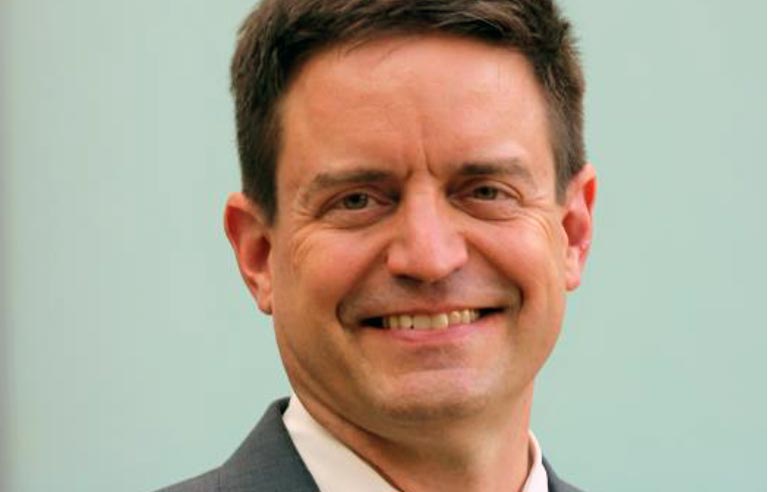Former Cal/OSHA chief Doug Parker to steer OSHA through politics & media scrutiny

Doug Parker, the former head of Cal/OSHA nominated by President Biden on April 9, 2021, to lead federal OSHA, steps into the most pressurized and politicized atmosphere in the agency’s 50-year history.
OSHA, a minor agency in the landscape of the federal bureaucracy, has less than a $600 million budget and less than 1,000 inspectors (vs EPA’s $9 billion budget and 14,000 workers). Due to the pandemic’s toll on the U.S. workforce, the agency has attracted a precedent-setting amount of attention from the White House and the national media. For most White House administrations and the national media, OSHA is off the radar screen. In the past, administrations have gone four years without a mention of OSHA.
But Parker, once confirmed, will take control of OSHA reeling from a year of negative media coverage:
• “OSHA Faulted for Not Doing More to Protect Workers from COVID-19,” headlined the Washington Post.
• “Federal and state agencies conducted fewer inspections than in the past and often handled coronavirus complaints through no more than an exchange of letters,” according to a Wall Street Journal investigation.
Parker will also operate under closer scrutiny from the Department of Labor and the White House than any previous head of OSHA. President Biden, who launched his campaign at a union hall in Pittsburgh, PA, and has promised to be “the most pro-union president,” issued an Executive Order on Protecting Worker Health and Safety one day after being inaugurated, on January 21, 2021. “Ensuring the health and safety of workers is a national priority and a moral imperative,” the President stated. He ordered OSHA to consider if any emergency temporary standards (ETS) on COVID-19 are necessary – a decision that at press time had yet to be made.
It’s been speculated OSHA could issue two ETSs – one specifically covering healthcare and the second for all other workers – or not do anything. In lieu of an ETS, there is discussion that a possible Congressional act would direct OSHA to promulgate an Interim Final Rule. And the possibility of an Interim Final Rule relating to infectious disease more broadly, rather than COVID-specific.
Winds of change
Whether OSHA issues an ETS or not, Parker confronts pent-up demand from Democrats, unions, safety and health advocacy groups, and the President himself for the agency to make what could be called a comeback from the barrage of bad press and four years operating without a Senate-confirmed top administrator. Pressure on Parker is compounded by the number of Labor Department and OSHA top officials with union or safety activist backgrounds.
“When you look at DOL and OSHA with this administration, it is dominated by organized labor,” says a former high-ranking OSHA official.
• Secretary of Labor Marty Walsh, former mayor of Boston, was the president of the Laborers’ Union Local 223 in Boston, which he joined at age 21. At his Senate confirmation hearing in March, Walsh emphasized his ties to organized labor and his blue-collar background, saying those factors had shaped his outlook on the Labor Secretary role and “the struggles working people and families face each and every day.” He has pledged to give priority to working with OSHA, including increasing the number of inspectors there.
• Deputy Labor Secretary appointee Julie Su was co-founder of Sweatshop Watch in California.
• OSHA principal deputy Jim Frederick was a safety and health official with the United Steelworkers, though he’s considered a voice of moderation.
• Parker’s chief of staff, Leah Ford, has 25+ years of experience in the labor movement, including 18 years with the International Brotherhood of Teamsters.
• Parker himself was a staff attorney for the United Mine Workers for almost three years, and executive director for three years of Worksafe, a California-based non-governmental organization advocating “safety, health and justice for workers,” before becoming head of Cal/OSHA in 2019.
Pro-labor OSHA regimes historically “assume the agency is broken and needs to be fixed, and they assume that the vast majority of employers are ‘bad’ and really need strong enforcement,” says the ex-agency manager, who served in numerous Democratic- and Republican-run OSHA administrations.
At press time, two safety and health professional societies, the American Society of Safety Professional (ASSP) and AIHA were silent on Parker’s nomination. Some members of both groups have been leery in the past of union-dominated OSHA regimes that emphasize the cop on the beat is back. ASSP told ISHN it is waiting for Parker to be confirmed by the Senate before issuing a statement. The Nation Safety Council, in contrast, quickly lauded Parker, saying his previous experience with worker health and safety issues will serve him well.
Impatient for action
The quickness of Parker’s nomination is a sign the White House and the Labor Department want to appeal to the base of labor supporters and revitalize the agency. Parker was nominated April 9. Dr. David Michaels wasn’t nominated by President Obama until July 28. Scott Mugno, the Trump administration’s pick to head OSHA (never confirmed by the Senate) was nominated in October, 2017.
Other signs that OSHA is on a “comeback trail” not four months into the Biden administration’s tenure:
• The President has proposed a 14 percent increase in funding for the Labor Department, and a 17-percent surge for DOL worker protection agencies such as OSHA and the Wage and Hour Division (a more detailed budget request for OSHA was pending at press time).
• A COVID-19 National Emphasis Program was launched by OSHA in March focusing inspections on healthcare services and non-healthcare industries such as meat and poultry processing and retail food service businesses.
• As of mid-April, 21 enforcement cases had been posted on federal OSHA’s website. Some proposed penalties exceed one-quarter million dollars. Critics of publicizing enforcement cases before any settlements are negotiated call it premature and PR-based “blaming and shaming.” The practice was stopped by the Trump administration.
Smooth operator
Parker is perhaps better qualified than any previous OSHA boss to handle the pressure and politics of the moment.
“Doug is much more of a mainstream political operative than David Michaels was, I think, with a finely tuned antennae for the political implications of decisions that could affect those above him on the chain,” says a Cal/OSHA employee. “Doug’s tenure at Fed OSHA will be similar to his time at Cal/OSHA. Very careful reading of what the President, Labor Secretary and his Deputy, want done, and close observation of the political ‘red lines’ that the White House and Secretary’s office set.”
“Doug is savvy, measured, approachable and very bright,” says a California industrial hygienist who has worked with him. “He is a big worker, labor advocate, but supportive of employers’ rights to do what is necessary. They do love him back in DC, which is where he worked before.”
Indeed, Parker spent more than five years at the Mine Safety and Health Administration during the Obama years; nine years at a DC law firm “established to serve the interests of working people,” according to the firm’s website; worked on President Clinton’s first inauguration committee; managed radio press at the Democratic National Committee during Clinton’s first run for the presidency; and was an aide to the late Democratic Senator Paul Wellstone of Minnesota.
External politics and pressures aside, Parker also faces a daunting internal OSHA challenge: reviving morale and rebuilding senior staff infrastructure. “He’ll have his hands full rebuilding the staff and organization, and reviving the spirit de corps and sense of mission among the ranks,” says the Cal/OSHA employee.
OSHA’s top-level Washington organization chart currently shows three acting directors, including standards, and five acting regional administrators out of ten.
Several safety and health experts contacted for this article hope Parker also can address what they consider his most important priority: at least beginning the discussion with all stakeholders – labor, business, professional societies and others -- about what approach OSHA should take to reinvent itself for the 21st century – perhaps more of a corporate consultation model or a worker empowerment model.
“Times have changed, the workforce has changed, the nature of work has changed, and the OSHA model has not kept pace with those developments,” states ORCHSE, a workplace safety group of the National Safety Council, in a white paper published this year.
But some sources contacted by ISHN are pessimistic that “big picture” work on making OSHA relevant to today’s work environment will get much time or energy, given the immediate pressure from the administration for the agency to make a comeback, get better press, and reassert its influence in the field. This near-term priority is reinforced by the old school pro-union thinking of Biden and the Labor Department aimed at appeasing the labor base, even if it doesn’t come close to having the influence it once did. In 1983, unions represented about 1 out of 5 workers; now it’s 1 in 10 workers, according to the U.S. Bureau of Labor Statistics.
Looking for a reprint of this article?
From high-res PDFs to custom plaques, order your copy today!









